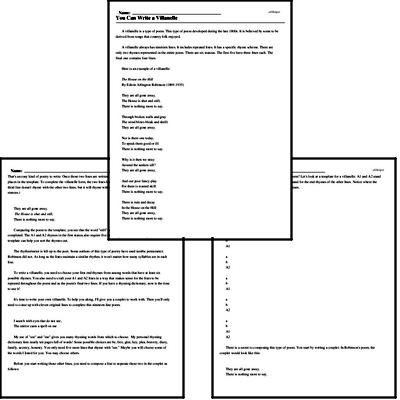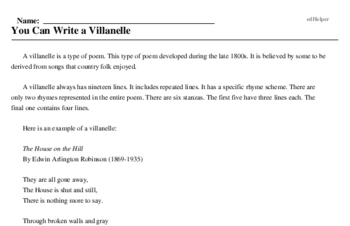You Can Write a Villanelle
A villanelle is a type of poem. This type of poem developed during the late 1800s. It is believed by some to be derived from songs that country folk enjoyed.
A villanelle always has nineteen lines. It includes repeated lines. It has a specific rhyme scheme. There are only two rhymes represented in the entire poem. There are six stanzas. The first five have three lines each. The final one contains four lines.
Here is an example of a villanelle:
The House on the Hill
By Edwin Arlington Robinson (1869-1935)
They are all gone away,
The House is shut and still,
There is nothing more to say.
Through broken walls and gray
The wind blows bleak and shrill:
They are all gone away.
Nor is there one today,
To speak them good or ill:
There is nothing more to say.
Why is it then we stray
Around the sunken sill?
They are all gone away,
And our poor fancy-play
For them is wasted skill:
There is nothing more to say.
There is ruin and decay
In the House on the Hill:
They are all gone away,
There is nothing more to say.
Did you notice the repeating lines all through the poem? Let's look at a template for a villanelle. A1 and A2 stand for the repeating lines. The lowercase "a" and "b" stand for the end rhymes of the other lines. Notice where the repeating lines fall in the poem. Each is used four times.
Template:
A1
b
A2
a
b
A1
a
b
A2
a
b
A1
a
b
A2
a
b
A1
A2
There is a secret to composing this type of poem. You start by writing a couplet. In Robinson's poem, the couplet would look like this:
They are all gone away,
There is nothing more to say.




